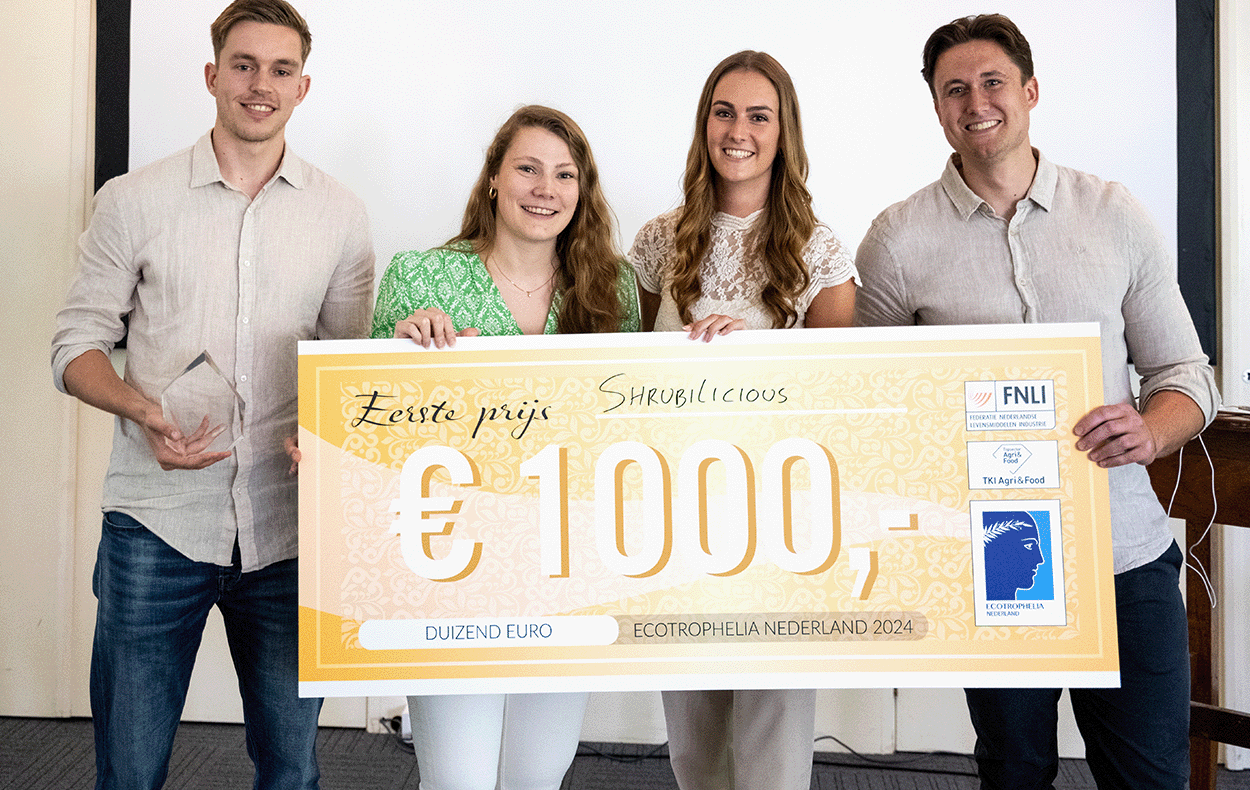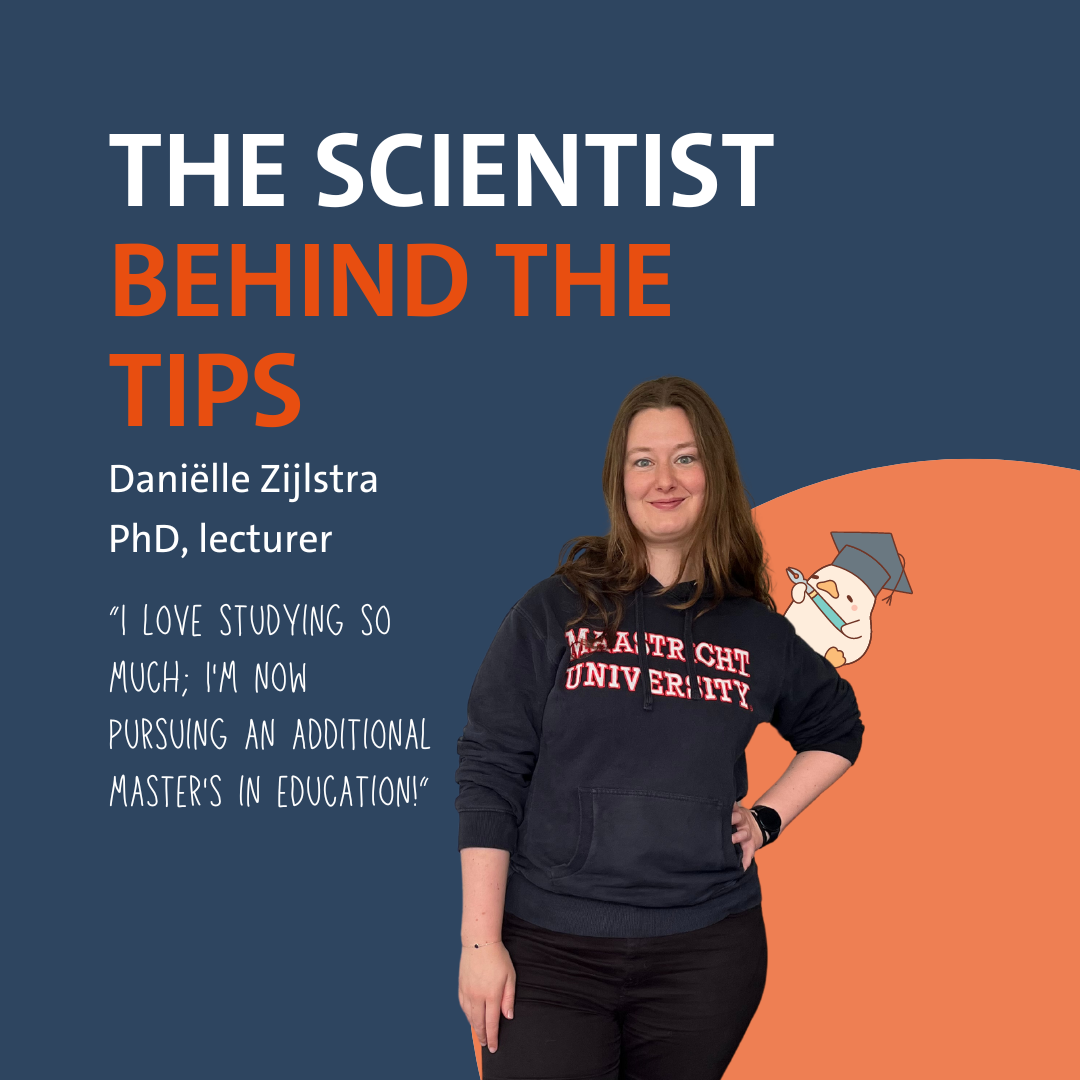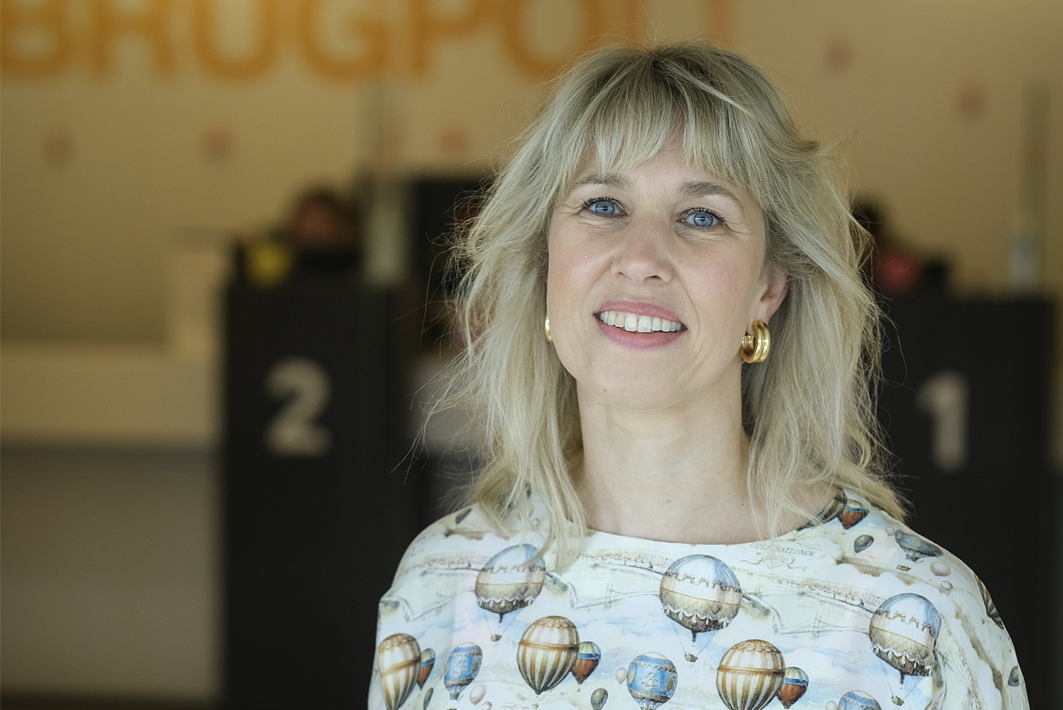"Research serves a higher purpose"
He founded three companies that translate his scientific knowledge into commercial applications. He has no fewer than nine patents to his name. Working with the School of Business and Economics, he also developed a course to raise young researchers’ awareness of the potential for valorisation of their own research. “Valorisation means creating added value. The idea that it’s only about creating spin-offs and selling patents is a major misconception.” In late January, Professor Ron Heeren will be presented with the NWO Physics Valorisation Prize, worth €250,000.
Ron Heeren’s specialisation is imaging mass spectrometry. In lay terms: the practice of photographing molecules, although this sounds misleadingly simple. Using this advanced technology, his team can read from a single hair whether you have used cocaine in recent weeks, or deduce from the smoke released when cutting into tissue during an operation whether cancer cells are present. In interviews, Heeren is always clear: he wants the results of his research to be useful for society at large. This is why he switched to biomolecular research after his PhD research on nuclear fusion. It is also why he transferred in 2014 from the Randstad to Maastricht University, where he leads the M4I institute. Over the past five years, this institute has established an infrastructure for molecular imaging that is unparalleled worldwide.
In Maastricht, open-minded doctors are within easy reach
“In Amsterdam I laid the foundation for many of the ideas I and my group are still working on, but the clinicians were too far away to help us translate our findings to diagnostics. Here in Maastricht, the surgeons share the office with the mass spectrometrists and electron microscopists. It gives you a completely different research dynamic, and makes that translation much easier.” But physical proximity is not all. Just as essential are doctors who are open to new technologies and who can serve as sparring partners – and these, Heeren found in the ‘young’ Maastricht UMC+.
Investors, technicians, entrepreneurs and young researchers are indispensable
The parties that were willing to invest in M4I’s activities cannot go unmentioned either: the Province of Limburg, Maastricht University and the Maastricht academic hospital. The technology developers Maastricht Instruments and IDEE are in close proximity, and can move fast to build new tools for research. Indispensable, too, are young researchers willing to put on their ‘valorisation glasses’. And then there are the entrepreneurs, people who are willing to take risks and start a business. Heeren: “I’m a scientist; business is not my core task.”
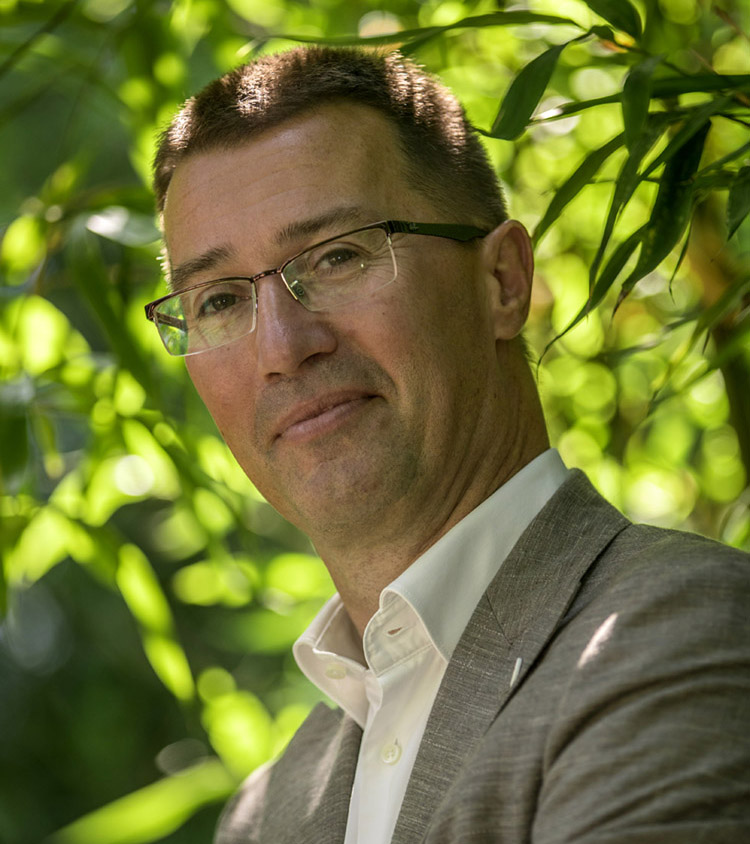
About Ron Heeren
In 2014 Ron Heeren was appointed as distinguished university professor and Limburg Chair at Maastricht University. He gained his doctorate in 1992 from the University of Amsterdam and led a research group at AMOLF. Although being trained as a technical physicist, he now focuses on the biomedical applications of mass spectrometry.
About the Physics Valorisation Prize
The NWO awards the Physics Valorisation Prize to a Dutch physics researcher or group of researchers who have made the results of their own research useful for society. Of the €250,000 prize, now being awarded for the 11th time, €235,000 is earmarked for a new research project determined by the winner and lasting two to four years. The remaining €15,000 can be used by the winner as he or she wishes.
Why business and science need to be separate
This is why Heeren consciously opted not to play an operational role in the spin-off companies he initiated. “I think it would be a conflict of interest with the research I do at M4I using public funds. I fear that at some point you’re unconsciously going to put the interests of the company, and the money you could earn, above your scientific integrity. You have to keep that separate.” For the Dutch Screening Group, for example, which focuses on the chemical analysis of hair, he is a shareholder and scientific adviser, but stays out of the commercial side of things. He also thinks this is clearer for his students and PhD candidates. “As a supervisor you have to support them as they forge their own path and choose their own objectives. If you want to train creative, independent researchers, you shouldn’t push them one way or another.” And besides: for Heeren, working on scientific puzzles is simply too much fun. (text continues below the picture)
Ron Heeren in the theatre
On Monday evening, November 18, Prof. Ron Heeren will be on stage at the Theater in Liège from 7 pm. The evening is about science without borders and offers a creative perspective on imaging science in a cinematic dialogue with a filmmaker.
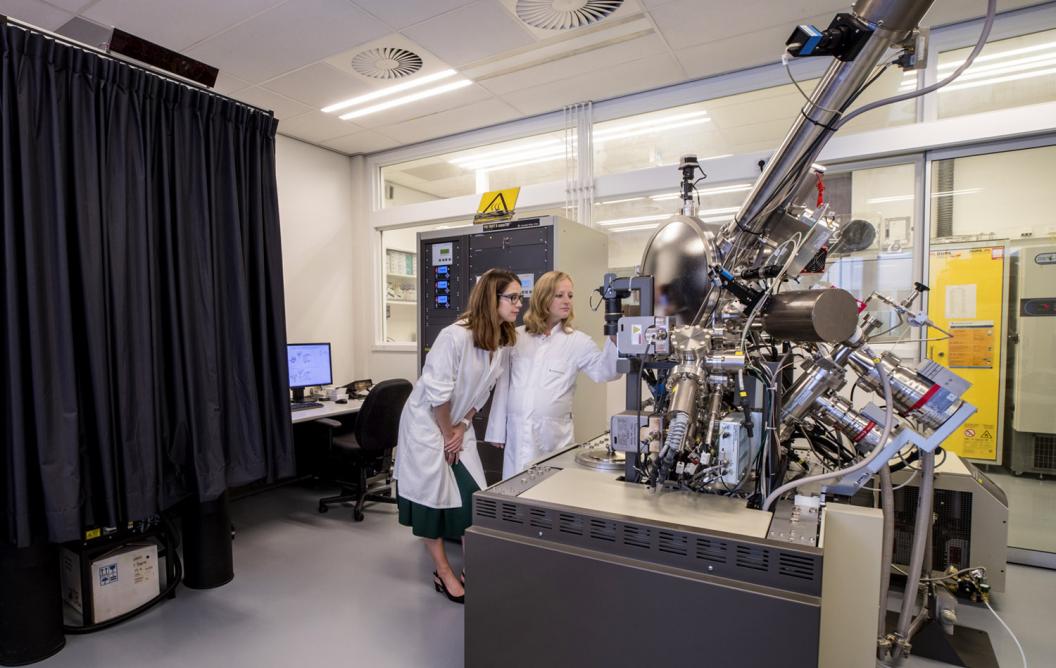
Photo: Harry Heuts
From particle physics to pathological diagnoses
Sometimes his background in fundamental physics works its way into his current research. For example, Heeren took a detector designed for particle physics research by CERN (the European organisation for fundamental research on elementary particles) and developed it into an instrument for molecular pathologists. “The MediPix detector generates high-resolution molecular images, which can improve patient diagnostics. By adding an extra layer of information, it enables the pathologist to make a more precise diagnosis.”
Making imaging even faster and more accurate
So Heeren is pleased that his group is collaborating with researchers from CERN in the MediPix 4 Consortium, which is working on the next step. Heeren’s dream is to be able to perform molecular analyses accurate to the nanometre, and with the MediPix 4, this dream is coming closer to reality. Nikhef, the Dutch institute for subatomic physics, is involved too, and one of Nikhef’s top scientists, Jo van den Brand (another laureate of the NWO Physics Valorisation Prize) was recently appointed professor at Maastricht. “A technology platform like MediPix enhances not only the university’s knowledge level, but also its technology level. So that’s where the prize money will go: to a PhD candidate in that project. There’s no shortage of ideas; what’s always lacking is enough hands to implement them.”
The higher purpose of scientific research
In the course Entrepreneurial Awareness, which Heeren developed with colleagues from SBE, he consistently emphasises that creating value involves more than patents and spin-offs. “It’s about realising that the knowledge you generate as a researcher has more value than just your publications or dissertation. With the knowledge you acquire here in this ecosystem, we might be able to educate other people too. Or we can use it to help companies or clinicians and patients. The research serves a higher purpose, you’re doing it for a reason.”
Two seconds of silence in the interview
Heeren managed to find, at the last minute, half an hour in his full schedule to talk about the Valorisation Prize. The time is almost up. Asked whether he is ever not working, he falls silent for the first time. A full two seconds, then he says, smiling: “Definitely! I’m a certified volleyball coach. I’ve coached youth teams and women’s teams and, until recently, a team of retired entrepreneurs from Maastricht. The oldest was 90. So much fun!” And yet even there, his work is never far away.
Volleyball taught him an important lesson
To obtain his coaching certificate, Heeren once had to follow a course in Positive Coaching. As a hard scientist, he was initially unenthusiastic. “But it was the best course ever. There was an eye-opening piece of advice that I’ll never forget.” Focusing on what your team is not doing well is frustrating for everyone. As a coach, you’re better off focusing on what they can do well, and trying to make it even better. “I applied that with the women’s team I was coaching at the time, but I still apply it with my students at the university. That way you can turn a failed experiment into a positive learning experience.” He was also work-free recently, when he spent two days in the desert in Jordan, with his wife and without his mobile phone and internet. “My mind sometimes stands still, but not too often”, he concludes, laughing.
Also read
-
Maastricht University students have won the Dutch final of the student competition Ecotrophelia, a drinking vinegar based on apple cider vinegar, fruit and herbs.
-
In the upcoming months, we’ll share tips on Instagram for our students on how to live a healthier life. Not just a random collection, but tips based on actual research happening at our faculty. The brains behind this idea are Lieve Vonken and Gido Metz, PhD candidates at CAPHRI, the Care and Public...
-
Mayke Oosterloo is a movement disorders neurologist at Maastricht UMC+ and a researcher at the MHeNs institute of Maastricht University. In the outpatient clinic and various nursing homes in Limburg, she guides and treats patients (and their loved ones) with Huntington's disease.
